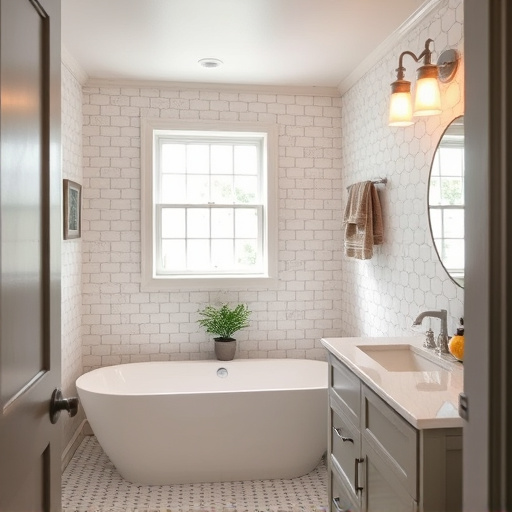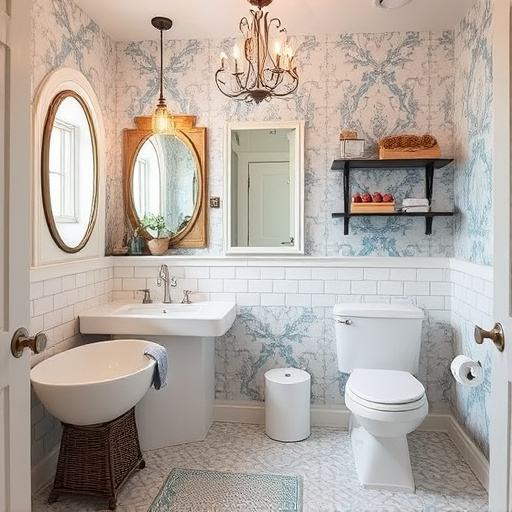Choosing the right tools for DIY flooring install is vital for durability and quality. High-quality tools ensure precision, prevent damage, and make installations less stressful. Accurate measurements and specialized cutting tools are key for aesthetic finishes. Understanding type-specific techniques and using appropriate adhesives for transitions is crucial. Floating floors offer flexible, easy installation methods.
Achieving a successful do-it-yourself (DIY) flooring install starts with the right tools. This comprehensive guide equips you with the knowledge to choose the best flooring tools for durability and efficiency. From precise measuring and cutting techniques to mastering installation methods tailored to diverse floor types, we break down essential steps ensuring a flawless flooring install. Elevate your DIY project with these expert-recommended tools and tactics.
- Choose Right Flooring Tools for Durability
- Measuring and Cutting: Precision is Key
- Installation Techniques for Different Floor Types
Choose Right Flooring Tools for Durability

When undertaking a DIY flooring install, selecting the right tools is paramount for achieving durability and long-lasting results. The wrong tools can lead to uneven cuts, poor finishes, and even damage to your new flooring. For instance, using a cheap, low-quality hammer might result in uneven nail strikes, compromising the floor’s integrity. Instead, opt for robust tools designed specifically for flooring installation, such as a heavy-duty hammer or a flooring saw.
Investing in top-tier tools not only ensures a smoother and more precise flooring install but also contributes to the overall quality of your home transformations. Whether you’re tackling interior painting projects or preparing for exterior painting tasks, having the appropriate tools makes the process more efficient and less stressful. This approach will save you time and money in the long run, allowing you to enjoy your new flooring for years to come.
Measuring and Cutting: Precision is Key

When it comes to DIY flooring install, precision is paramount, especially during the measuring and cutting phases. Accurate measurements are crucial for ensuring your new floors fit perfectly into your desired spaces, whether for home additions or updating existing areas as part of customized home renovations. This meticulous process involves taking detailed dimensions of the room, accounting for doorjambs, baseboards, and any unique architectural features.
Using a tape measure designed for flooring work is essential to maintaining accuracy. Once you have your measurements, cutting tools like a miter saw or utility knife are employed to shape the floors to fit seamlessly. Cutting with precision not only guarantees an aesthetically pleasing finish but also ensures functional spaces that are both comfortable and safe to walk on.
Installation Techniques for Different Floor Types

When it comes to DIY flooring install, understanding installation techniques specific to different floor types is key. For instance, hardwood floors require careful measurement and precise cutting to fit snugly into tight spaces, often best achieved with a miter saw and a measuring tape. Laminate flooring, on the other hand, is designed for simplicity, allowing for a click-and-lock system that makes installation a breeze, suitable even for beginners tackling residential renovations.
In interior painting projects or home additions where different floor types might meet, transitioning smoothly between them necessitates specific techniques. For joining hardwood to tile or carpet, various adhesive options and specialized tools are available. In the case of floating floors like vinyl or laminate, which don’t require glue, a variety of locking mechanisms ensure stability and a seamless look, offering DIYers a flexible solution for both new installations and updates in existing spaces.
When it comes to DIY flooring install, the right tools can make all the difference. By choosing durable flooring tools, measuring and cutting with precision, and understanding installation techniques for your specific floor type, you’ll achieve a professional-looking finish that enhances your space. Remember, the key to success lies in preparation and using the best tools for the job.














